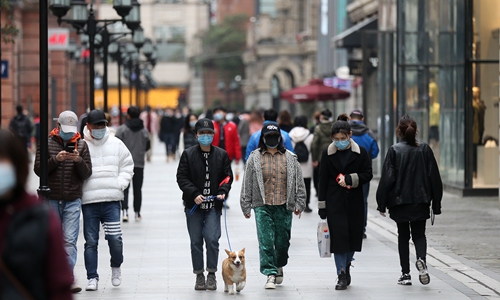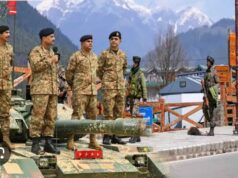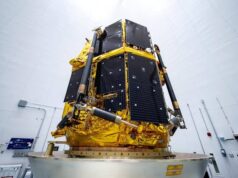Wuhan story might prove Trump is right about reopening economy – partially

After two months of indoor quarantine, residents in Wuhan enjoy their walking in business streets.
Before being forced by unabating signs of the coronavirus epidemic in his country to extend nationwide social distancing through the end of April, US President Donald Trump said he wanted to have the US reopened and “just raring to go by Easter [April 12].”
As many in the US, including his political opponents and media pundits, have pointed out that was not only premature but also dangerous and they are right as the virus has killed more than 3,800 people and infected over 189,000 more. It is also true that without having the epidemic under control, any other measure to revive the economy would be futile.
However, that does not mean Trump was entirely wrong to even suggest it. He is right about a few things – that the epidemic will eventually be over, though probably not because of a miracle, and that the US cannot remain closed forever. More importantly, Trump is at least partially right about thinking of reopening the US economy early based on what we are seeing in Wuhan, the Chinese city that was hit the hardest by the virus.
Wuhan, which has started to reopen its economy, has shown that the process to restart the economy requires a lot of preparation and a coordinated plan. If Trump wants a speedy recovery for the US economy, he needs to pay attention to what’s happening in Wuhan and get some pointers now, if he hasn’t already.
A quick hint: only giving cash to businesses and consumers won’t be enough; stimulus must be accompanied by an effective mechanism to ensure public safety. The logic behind this is simple: people won’t go back to work or go out to spend money, if they are still scared of the virus.
After over two months under lockdown, Wuhan is set to reopen on April 8. But even before the official lifting of restrictions, the city has already been gradually and smoothly returning to work, paving the way for a speedy recovery after the lockdown is lifted.
As of Wednesday, 40.4 percent of the city’s workforce has returned to their jobs and 85.4 percent of businesses have resumed operations, according to official data. That is no small step for a city of 11.21 million people and with an annual GDP of roughly 1.6 trillion yuan ($228.6 billion).
Still, this might not mean anything if the number of new infection cases is not considered. But in the past week, the number of new confirmed cases in the city has practically dropped to zero, though it reported a few imported cases.
A close look at how officials are preparing to reopen the city reveals that this was not luck or a miracle. There is a well-coordinated plan requiring near-precision execution.
The plan starts with work resumption at larger companies. Large corporations provide a more controllable environment to track down potential infections because they know their workers, whereas small businesses, such as restaurants, where customers are hard to track if necessary, pose larger risks.
Large corporations are tasked with protecting their own employees. For example, some companies in the city arrange transportation for their workers and provide protective gear.
Wuhan started to allow large corporations to resume production late last month. As of Tuesday, 97 percent of 483 industrial companies with annual revenue over 200 billion yuan in the city’s largest industrial park have resumed production. One of the biggest steelmakers in the country, Wuhan Iron and Steel Corp, has resumed full production, according to China Media Group (CMG) on Wednesday.
While many large industrial firms have and are returning to work, the city has also been reopening large commercial centers, where there are more people, but preventive measures can still be effective.
In the past few days, the city has reopened 11 large commercial centers with shopping malls and office space, CMG reported on Wednesday. Visitors are required to show their “health code” – a digital form with their movement over the past two weeks or longer, leave their information and have their temperature checked upon arrival.
Accompanying this process is substantial recovery in hospital capacity, which is absolutely essential in case of a resurgence in widespread infection. As of Wednesday, 62 medium and large hospitals, 205 community clinics and 3,589 drug stores covered by health insurances across the city have resumed normal healthcare functions, CMG reproved.
It remains to be seen how successful this approach will be because unfortunately, there are always risks with this intangible enemy, however, so far it seems to be a sensible and effective approach.
Not only can it minimize risks of new infections, it could also offer reassurance to residents who have been through a rather traumatic experience and could understandably still be frightened. From an economic standpoint, reassurance and confidence will be absolutely crucial during the recovery period.




